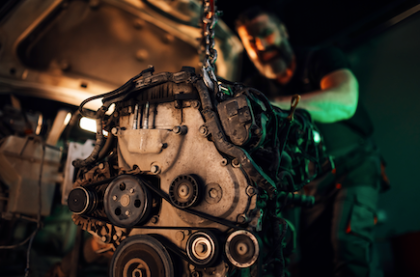INDEPENDENT NATIONAL DEALER
Nationwide-USA
San Diego, CA
(800) 653-0323
OUR BLOG
Throwing a rod is one of the worst things that can happen to your engine. If you aren’t aware of what it is, this post by Synthetic Oil Inc. in San Diego, CA will tell you all you need to know, including how to avoid it.

For car owners, few engine failures sound as serious—or as expensive—as “throwing a rod.” It’s one of those mechanical issues that can instantly turn a running engine into a nonfunctional wreck. But what does it actually mean to throw a rod? How does it happen, and more importantly, can it be prevented? Let’s break it down.
Keep your engine strong! Call Synthetic Oil Inc. in San Diego, CA, at (800) 653-0323 or visit AMSOIL's online shop to buy the best synthetic oil to keep it working smoothly.
All You Need to Know About Throwing a Rod
What Does “Throwing a Rod” Mean?
“Throwing a rod” is a term used to describe a catastrophic engine failure in which one of the connecting rods inside the engine breaks free. A connecting rod is the internal part that connects the piston to the crankshaft. Its job is to convert the up-and-down motion of the piston into the rotational motion that powers your vehicle.
When a rod "lets go," it often punches through the side of the engine block or damages other components. This type of failure can cause massive internal damage, usually requiring a full engine replacement or a very expensive rebuild.
How It Happens
Throwing a rod usually occurs because of extreme stress or a lack of proper lubrication. Here are the most common causes:
1. Low or No Oil
Engine oil lubricates all moving parts, including the crankshaft, pistons, and connecting rods. If your engine runs low on oil or if oil isn’t circulating properly, the internal components heat up and seize. This can cause a rod to snap or break loose.
2. Over-revving
Driving at extremely high RPMs—either from racing, downshifting incorrectly, or a malfunctioning transmission—can put tremendous stress on the connecting rods. If a rod can't handle the strain, it may bend or break.
3. Hydrolocking
Hydrolocking occurs when water enters the engine cylinders. Since water doesn’t compress like air, the piston can’t complete its stroke. This creates extreme pressure that can bend or break a connecting rod instantly.
4. Engine Detonation or Pre-Ignition
When fuel in the engine ignites prematurely, the shock can put severe stress on engine components, including the rods. This can lead to weakening over time or sudden failure.
5. Worn Bearings or Internal Engine Wear
Over time, the bearings in the engine that support the crankshaft and connecting rods can wear out. If a bearing fails, the rod can lose alignment and eventually break loose.
Ensure your engine won’t throw a rod! Feed it with AMSOIL's Signature Series 0W-20 Synthetic Motor Oil, the best synthetic oil in San Diego, CA.
Signs You Might Be About to Throw a Rod
In some cases, you’ll get warning signs before the rod actually breaks. Here’s what to watch for:
- Knocking sounds from the engine: Often called “rod knock,” this deep tapping sound can indicate a failing rod bearing.
- Low oil pressure warning light: If oil isn’t reaching critical areas, damage can follow quickly.
- Excessive smoke or burning oil: May indicate internal engine damage or wear.
- Engine misfire or rough running: A bent or damaged rod may prevent a cylinder from firing properly.
If you notice any of these signs, it’s crucial to shut off the engine and have the car inspected immediately. Catching a failing rod before it breaks can sometimes save the engine.
What Happens After You Throw a Rod?
Unfortunately, the aftermath of a thrown rod is usually severe. The broken rod can tear through the engine block, crack the oil pan, damage the crankshaft, and even destroy the piston. In many cases, the engine is beyond repair and needs to be replaced.
The cost of repair can range from several thousand dollars for a rebuild to even more for a full engine swap. That’s why prevention is so important.
How to Prevent Throwing a Rod
You can reduce your chances of throwing a rod by taking good care of your engine. Here’s how:
- Check and change oil regularly: Keep oil levels topped off and replace oil according to your vehicle’s recommended intervals.
- Avoid high RPMs and aggressive driving: Especially if your vehicle isn’t designed for it.
- Keep water out of the engine: Avoid driving through deep water or flooded areas.
- Address engine noises quickly: Don’t ignore knocking, ticking, or other unusual sounds.
- Follow your car’s maintenance schedule: Routine inspections and servicing can catch problems before they become major.